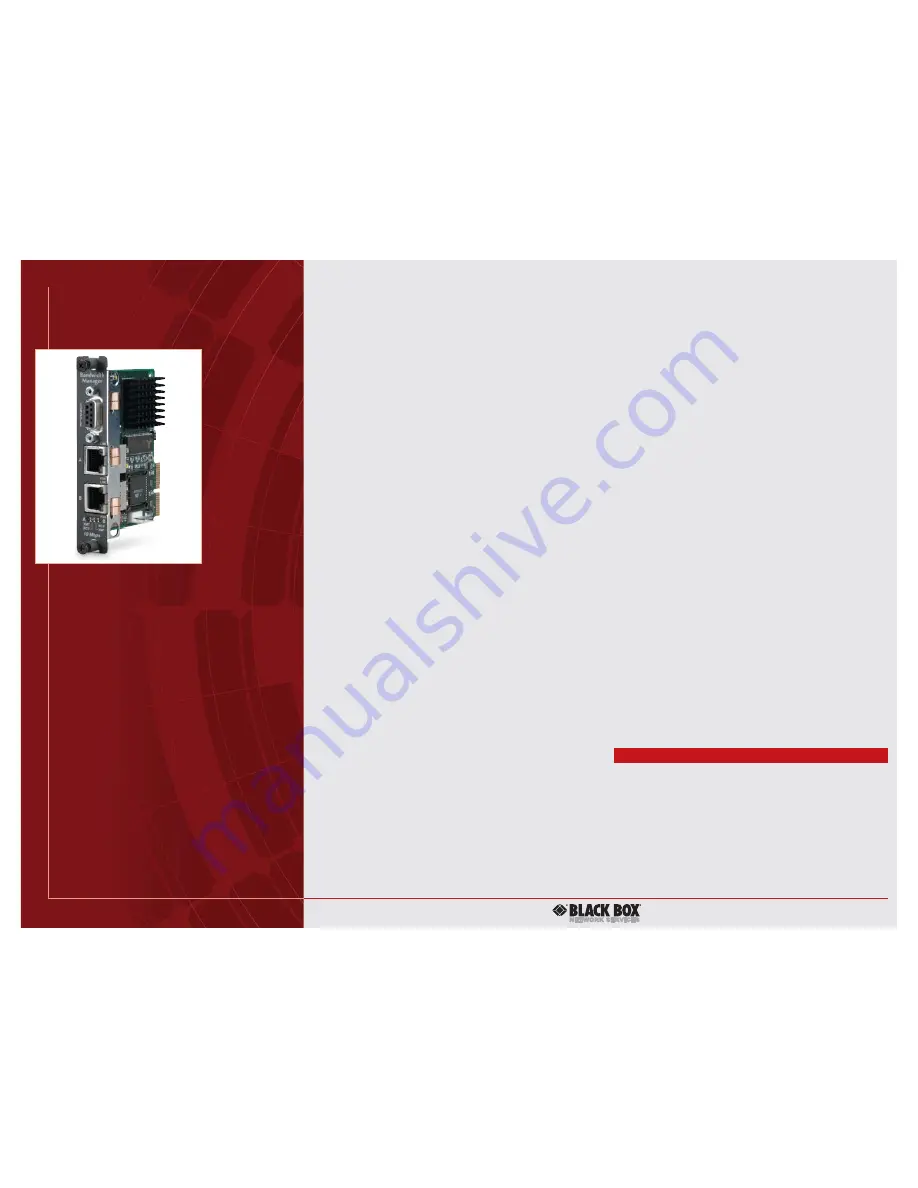
6 of 15
5/4/2007
#24435
Making the most of available bandwidth becomes more
important as Internet use increases. To allocate bandwidth
in the most cost-effective way within a network LAN/WAN
environment, add a Bandwidth Manager module to any
High-Density Media Converter System II.
Ideal for Web hosting, server colocation, and service
provider applications, this 2-port networking device enables
you to easily and inexpensively control bidirectional
bandwidth in 1-kbps increments up to 10 Mbps.
Configure the module in minutes using the iView software
or an SNMP application, such as HP OpenView. Within five
minutes, you can configure bandwidth simply by dialing in the
desired amount.
Use the Bandwidth Manager to quickly adjust uplink
or downlink speed. By fine-tuning these settings, you can
minimize bandwidth waste and ensure a better use of
resources.
Because this module offers bidirectional bandwidth
control, you can adjust bandwidth on traffic traveling
between upstream and downstream ports. This feature
makes the Bandwidth Manager highly suited for environ-
ments where you need to provide multiple levels of service to
end users, such as in a business park or multitenant building.
The Bandwidth Manager has two shielded RJ-45 10BASE-T
ports (Ports A and B) for network connections and a DB9
(RS-232) DTE serial port for IP configuration. You can config-
ure both RJ-45 ports for half- and full duplex operation to
match the mode of your connected hardware.
Choose either Port A or Port B to assign bandwidth; do
this using iView or by manually flipping DIP switches on the
module’s component side. Using iView, you can set the
bandwidth of the module‘s data ports up to 10 Mbps and
forward it in each direction (A to B or B to A). To edit the data
rate for each port in iView, choose between 12 predefined
rates or enter your own custom rate in granular, 1-kbps
increments.
For each data port, choose a mode for forwarding or
discarding frames that come in contact with the Bandwidth
Manager. Among your choices are general modes for
forwarding all traffic to your LAN or forwarding just IP/ARP
traffic. The latter option is best for filtering traffic from the
Internet to a LAN.
There are also inclusionary modes in which the Bandwidth
Manager forwards only IP/ARP packets that fall into a certain
range while either allowing or preventing all non-IP traffic
to pass.
Or use exclusionary modes where the module forwards
everything except what you specify in an IP address range,
including non-IP traffic, or forwards all IP/ARP packets minus
what you specify in an IP range. The second option is best
for filtering traffic from a LAN to the Internet or a WAN.
Once you assign an IP address to the module, use iView
or another SNMP-based network management application
to configure and remotely manage the Bandwidth Manager.
If you don‘t enable bandwidth-management capabilities
on the device, you can essentially use the module as a
10BASE-T to 10BASE-T extender instead.
BANDWIDTH MANAGER
724-746-5500
blackbox.com
TECH SPECS
Approvals —
FCC Class B, Part 15; CE
Operation —
Half- or full duplex
Speed —
Bandwidth can be set in 1-kbps increments up to 10 Mbps
(with a bandwidth setting accuracy of +0% to -5%)
Connectors —
Network: (2) shielded RJ-45 (10BASE-T);
Serial DTE: (1) DB9 F (RS-232)
Indicators —
(4) LEDs: LINK, RCV, XMT, HDX/FDX
Power —
From the High-Density Media Converter System II Chassis
Item
Code
Bandwidth Manager
LE1028C
LE1028C

































